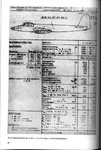Erich
the old Sage
Like I said there was no G-7 variant or experimental test variant in my books. the G-7 was posted as an after war notation for the several Ju 88G-6's that had different radar sets. MW 50 gave a performance increase for 10-15 minutes for each engine so yes if used to blast away from the sudden mossie night fighter, yes that is possible if the crew were sharp
can you post a sampling of the Waffenrevue article HH ?
can you post a sampling of the Waffenrevue article HH ?

